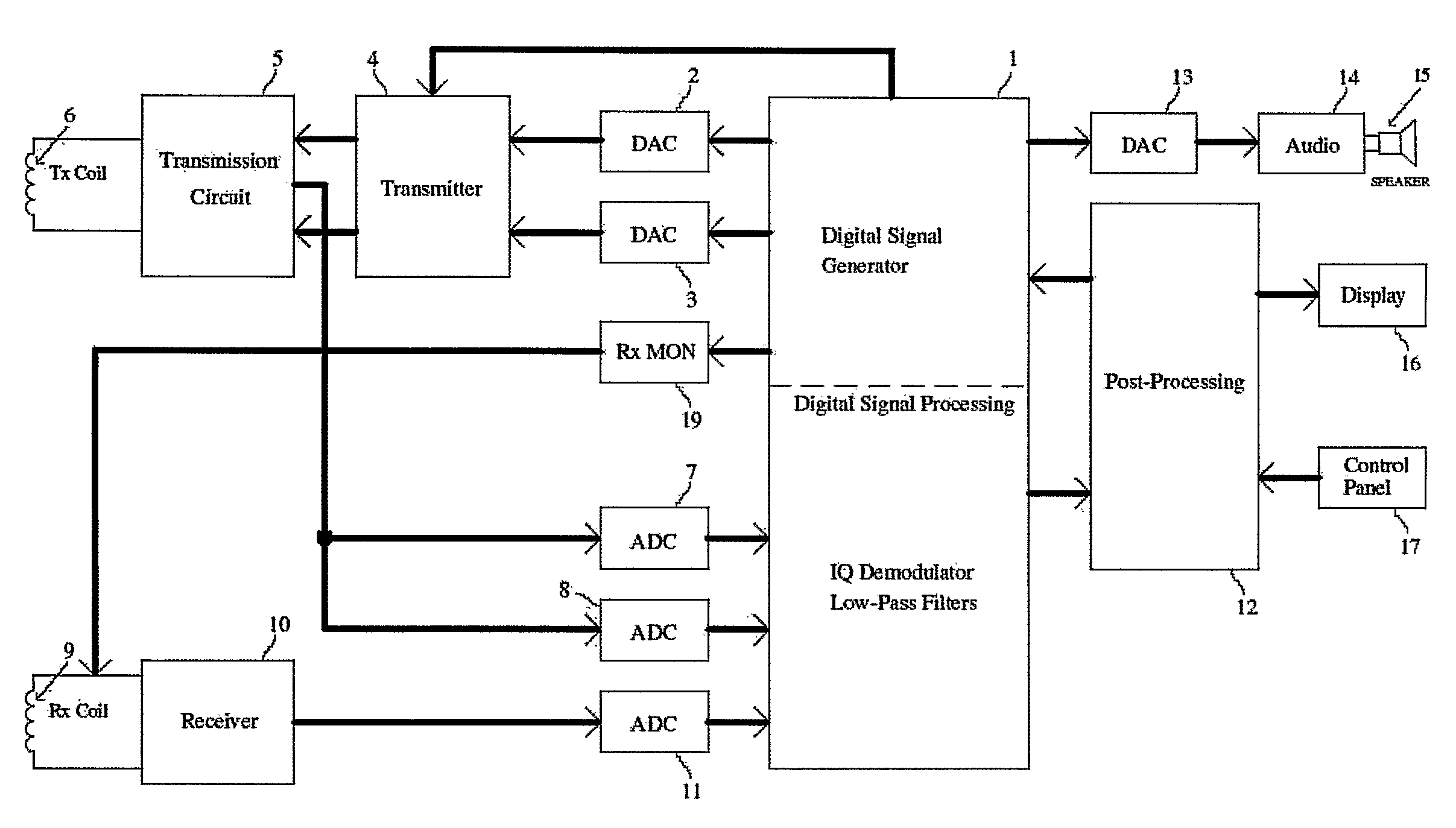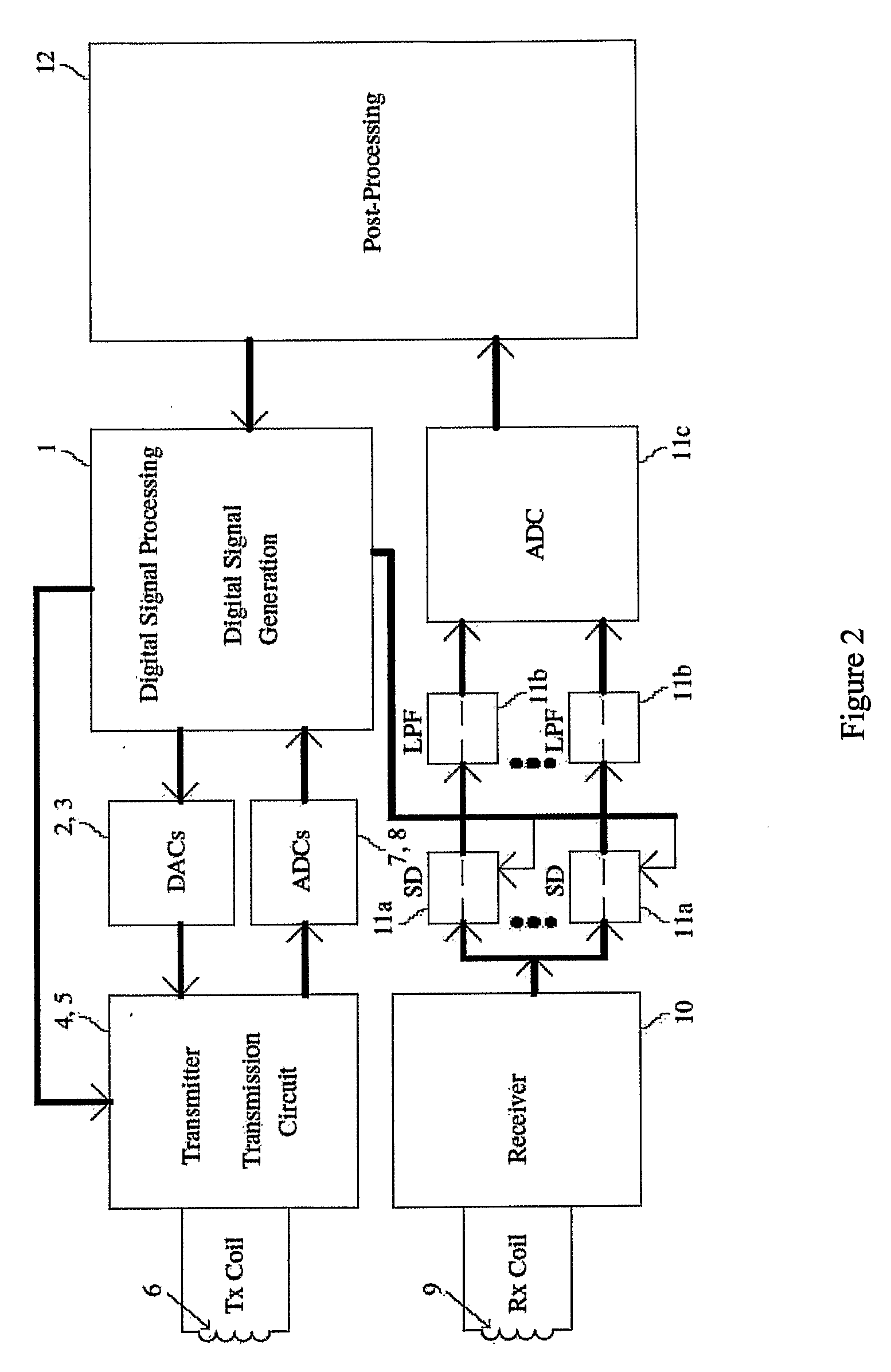Method and Apparatus for Metal Detection Employing Digital Signal Processing
a digital signal processing and metal detection technology, applied in the direction of magnetic measurement, geological measurement, reradiation, etc., can solve the problems of preventing their proliferation, increasing both the cost and the complexity of detectors, and improving the detection and discrimination of targets. , the effect of improving the signal to noise ratio
- Summary
- Abstract
- Description
- Claims
- Application Information
AI Technical Summary
Benefits of technology
Problems solved by technology
Method used
Image
Examples
Embodiment Construction
[0050] A multiple frequency digital metal detector of the invention is a metal detector transmitting and receiving one or more signals of different frequencies generated and processed using digital techniques. In one embodiment, the metal detector generates two or more frequencies sufficiently different of each other so that effective ground rejection and target discrimination / identification become possible (multiple frequency metal detector). This is based on the fact that the response of different metallic targets and that of ground change in a different manner with the frequency of the interrogating magnetic field. However, in another embodiment, the metal detector could generate only one signal with a certain frequency (single frequency metal detector). This would correspond to either a metal detector with minimal cost or to a metal detector optimised for maximum sensitivity at that frequency. In the following, unless stated otherwise, the multiple frequency metal detector is de...
PUM
 Login to View More
Login to View More Abstract
Description
Claims
Application Information
 Login to View More
Login to View More - R&D
- Intellectual Property
- Life Sciences
- Materials
- Tech Scout
- Unparalleled Data Quality
- Higher Quality Content
- 60% Fewer Hallucinations
Browse by: Latest US Patents, China's latest patents, Technical Efficacy Thesaurus, Application Domain, Technology Topic, Popular Technical Reports.
© 2025 PatSnap. All rights reserved.Legal|Privacy policy|Modern Slavery Act Transparency Statement|Sitemap|About US| Contact US: help@patsnap.com



